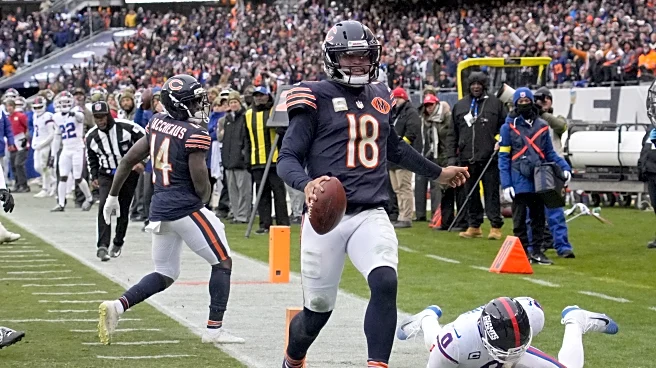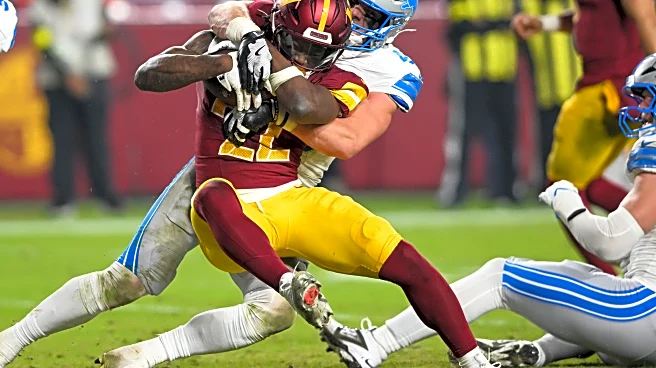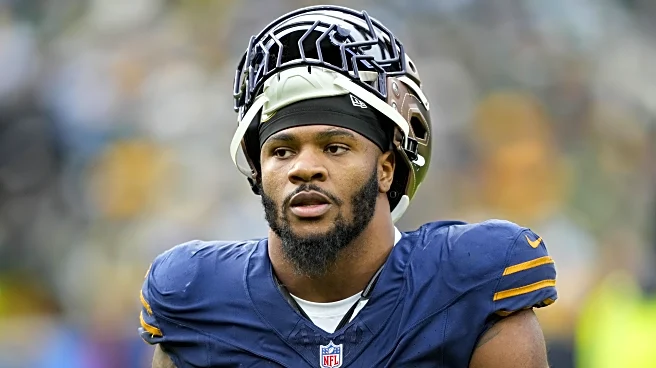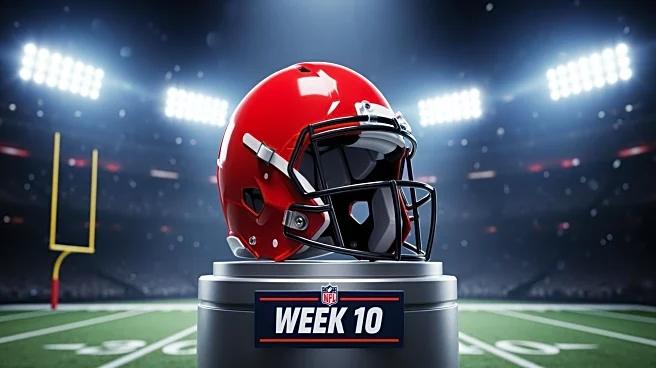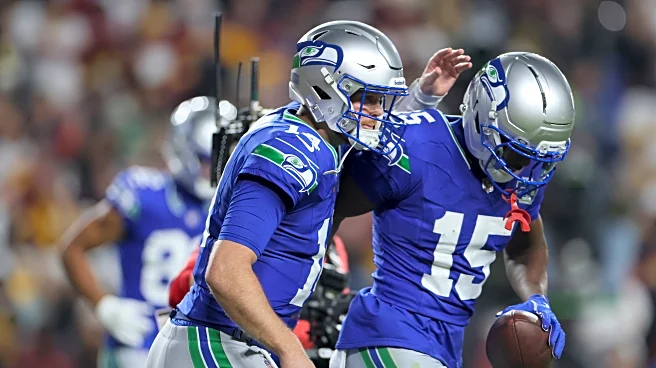What's Happening?
The latest NFL power rankings reveal a clear dominance of NFC teams over their AFC counterparts as the season progresses into Week 11. Teams like the Patriots, Seahawks, and Colts are emerging as strong
contenders, while traditional powerhouses such as the Eagles and Rams continue to perform well. The rankings also highlight the struggles of AFC teams like the Broncos and Steelers, who have faced challenges in maintaining consistent performance. The rankings are based on recent performances and Super Bowl odds, with NFC teams generally showing stronger prospects.
Why It's Important?
The dominance of NFC teams in the power rankings could have significant implications for playoff scenarios and Super Bowl predictions. As NFC teams continue to outperform, they may secure more favorable positions in the postseason, potentially leading to an NFC-heavy playoff bracket. This shift could impact betting markets and fan expectations, as well as influence team strategies and player performances. The disparity between the conferences may also prompt AFC teams to reassess their strategies and make adjustments to compete more effectively.
What's Next?
As the season progresses, teams will continue to vie for playoff positions, with NFC teams looking to maintain their dominance. AFC teams may need to make strategic changes to improve their standings and compete more effectively against their NFC counterparts. Upcoming games will be crucial for teams on the cusp of playoff eligibility, and the power rankings will likely continue to evolve based on team performances and injuries. Fans and analysts will be closely watching key matchups that could shift the balance of power between the conferences.
Beyond the Headlines
The current power rankings may also reflect broader trends in team management and player development within the NFL. NFC teams' success could be attributed to effective coaching, strategic player acquisitions, and robust training programs. Conversely, AFC teams may need to address underlying issues such as injuries, player performance inconsistencies, and coaching strategies to regain competitiveness. This dynamic could lead to long-term shifts in how teams approach building their rosters and developing talent.



